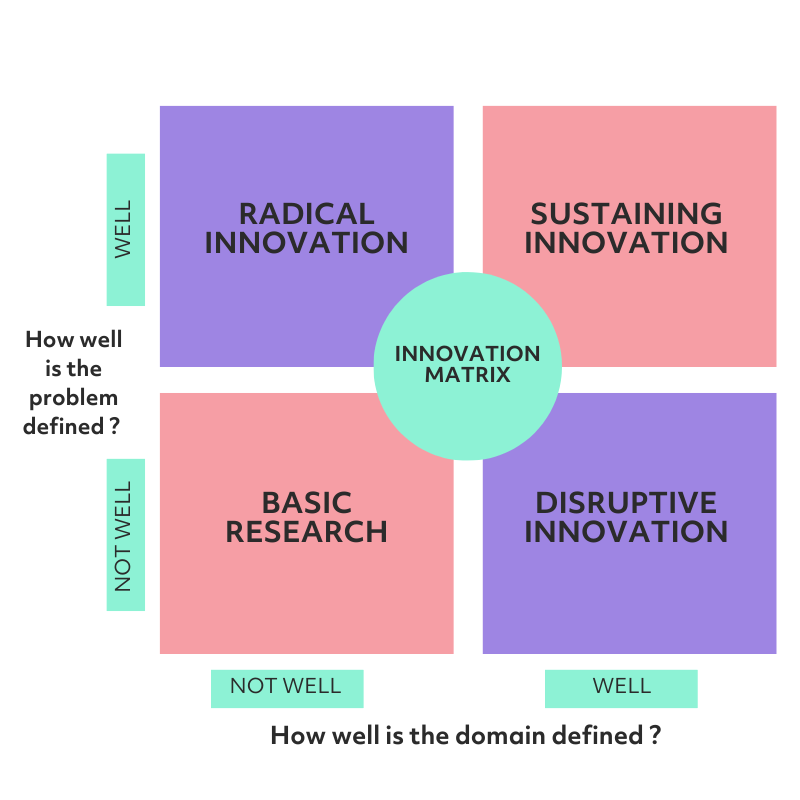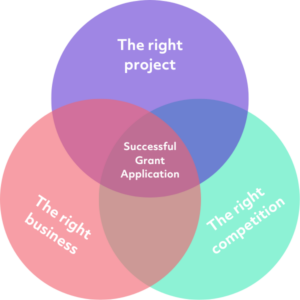Blog: An Introduction to Innovation Grants
- Grant Funding
- 6 Min Read
Are you a newly established start-up with a drive for innovation, a growing company that has transformed an idea into a successful business, or an SME poised to expand its impact? Then grants can be the gateway to your dream project and make an idea a reality. However, very few businesses are aware that there is a Goldilocks effect that should be taken into consideration when understanding what makes a successful grant application. The Goldilocks effect boils down to:
- The right project: A project that is just the right size – not too small, not too ambitious – with a ground-breaking innovation that can transform not just your business, but the entire market and even the UK economy. A project that aligns with the funding criteria and matches the perfect level of innovation based on Technology
 Readiness Levels.
Readiness Levels.
- The right business: a team that possesses all the technical and commercial expertise to execute a successful project, while keeping the business running smoothly.
- The right competition: Grants are competitive and entering the right race is essential, reading the eligibility criteria and scope and aligning project goals with grant goals can make a compelling case.
Grant Types Explained
Grants for innovation and product development are typically funded by Government departments, Local Authorities or Councils, UKRI and the EU sources such as Horizon Europe and Eureka Eurostars. There are four types of grants:
- Open competitions: A well-known example is the Innovate UK Smart Grant, which is open to businesses from any industry. It’s crucial to note that Smart Grants are highly competitive and should be considered only after exhausting all other funding options.
- Themed competitions: These are highly targeted competitions with a higher chance of winning as fewer businesses enter due to the targeted nature of the competition. Themed competitions can be found across a wide range of sources and can include local councils, research councils and Innovate UK.
- Local Grants: Local grants provided by councils and LEPs (Local Enterprise Partnerships) designed to prioritise local development goals and support economic growth, job creation, community welfare, and innovation within their regions.
- European Competitions: These competitions are specifically designed for businesses with a much larger budget. Some examples of European competitions include Horizon Europe, Eureka/Eurostars, and EIC. However, it’s important to note that international competitions are highly competitive, and it’s crucial to ensure that your business is prepared to compete on a global level before applying.
Understanding Your Innovation: Evaluating Its Maturity and Impact
At MPA, we believe innovation is about making things better than what’s currently available. It’s all about pushing the boundaries and striving for progress. The type of project you do will impact how much grant funding you get. Grant projects for Innovate UK are typically game changers, but how do we define that?
- Sustaining: Helps a business sustain its position in the market by significantly improving its products and services.
- Basic: This is the continuous improvement of existing products and services.
- Radical: This is a form of game-changing innovation. The technology is new meaning that there is a breakthrough that transforms industries and can create new markets.
- Disruptive: This is also a game-changing innovation. The innovation or technology is new and disrupts an existing market, it may create a new market.

Innovation grants are available to fund R&D work that is highly and technically risky and highly unlikely to be funded by other financing options such as loans. Evaluating the maturity of innovation will help determine if it meets the criteria for funding and to pitch the right project depending on the project outcomes and outputs and project type e.g. Industrial Research. We will explain the TRL and types of projects below. The following is a list of Technology Readiness Levels (TRLs) that measure the maturity of a technology or innovation:
Technical Readiness Levels:
- TRL1 – Basic principles observed: This stage involves early research to understand the technical feasibility of the innovation.
- TRL2 – Technology concept formulated: At this stage, a basic idea of how the technology may be used or applied at a conceptual level is developed.
- TRL3 – Experimental proof of concept: An early prototype is created to understand whether the technology can work.
- TRL4 – Technology validated in lab research/local environment: This stage identifies whether the technology works as expected in a simulated environment.
- TRL5 – Technology validated in the relevant environment: At this stage, the innovation or technology is evaluated to determine whether it works in a controlled real-life environment.
- TRL6 – Technology demonstrated in the relevant environment: This stage assesses whether the innovation or technology can be used by customers/users in a controlled real-life environment.
- TRL7 – System prototype demonstrated in an operational environment: A high-fidelity prototype/Minimum Viable Product is tested in a real-life environment.
- TRL8 – System complete and qualified: A full-release version is built and tested through alpha and beta testing.
- TRL9 – Actual system is proven in an operational environment: At this stage, a product/service is ready for release to the market and works in a real-life environment by users and customers.
Types of grant projects
Innovate UK typically awards grant funding to projects that start at Technology Readiness Levels (TRLs) 3/4 and mature to around TRL7/8. The TRLs are linked to the types of grant funding available and the most suitable type of project for the grant. Here are the categories of research and an approximate guide on the starting point of the TRL, and the endpoint of the project.
- Fundamental Research (starts at TRL1/2 and ends at TRL3/4): This refers to experimental or theoretical work primarily to gain new knowledge of underlying phenomena and visible facts, without any direct practical application or usage. This type of research is usually undertaken by a research organisation.
- Feasibility Study (starts at TRL3/4 and ends at TRL 5/6): This study helps businesses decide to work either individually or collaboratively with other industrial or research organisations before conducting a subsequent larger project. This project answers the question: “Can this be done? Will this work?”
- Industrial Research (starts at TRL3-5 and ends at TRL6-8): This refers to planned research or critical investigation to gain new knowledge and skills, for product development, processes, or services that lead to an improvement in existing products, processes, or services. The proof of concept, prototype, or MVP can be tested in testbed environments in this project to test technology in relevant environments.
- Experimental Development (starts at TRL 6/7 and ends TRL 8/9): This means acquiring, combining, shaping, and using existing scientific, technological, business, and other relevant knowledge and skills to develop new or improved products, processes, or services. Projects are closer to market and subsequently are entitled to a lower grant amount.
TRLs help gauge how mature an innovation is, guiding which grant funding and projects are most suitable. The four categories of research that Innovate UK funds are Fundamental Research, Feasibility Study, Industrial Research, and Experimental Development, each with a different starting point and ending point for the TRLs. Businesses can use an Impact vs. Effort matrix to identify the grant projects where the impact is high, and effort is high to evaluate the “Big Bets”.
UKRI: Funding Pathways for Every Stage of Innovation
UK Research and Innovation (UKRI) is the umbrella organisation for innovation grants, including Research Councils and Innovate UK.
Early stage: TRL1-2 (Fundamental Research)
If you have an early-stage idea, the Research Council route is a great option. This is especially true if you’re affiliated with a University or are pursuing a PhD to develop innovative technologies. With the right grant support, you can turn your idea into a reality and tap into funding and expert guidance through schemes such as Fellowships and accelerators.
Proof of concept: TRL 3-6 (Feasibility Studies and Industrial Research)
If your innovation has progressed beyond ideation and has made it to the Proof-of-Concept stage, it’s a clear indication that you are making real progress towards realising your vision. This is the ideal time to take your project to the next level by applying for Innovate UK or Government department grants.
Later-stage development: TRL 7-9 (Experimental Development)
Innovation Loans are a great option for well-developed ideas in later stages. These loans offer competitive interest rates, flexible repayment schedules, and industry-specific support to help businesses bring their innovative products, services, or processes to market. In addition, you may wish to use grants and to position your grant as Experimental Development with a grant for 45% of the total project size.
Contact Us
If you are interested in finding out whether you have a good chance of securing grant funding, please don’t hesitate to contact our team.
You may be interested in
On Thursday 28th March, 11:00 am – 11:45 am, we delve into the world of grants, addressing common misconceptions and equipping you with the knowledge needed to harness these invaluable resources for your business growth. You’ll walk away not just informed but inspired.
Hosted by our Head of Grant Services, Dr Chloe Sharp, you’ll learn more about:
• Misconceptions and common myths debunked.
• Understanding if you are eligible.
• How to navigate the process and common pitfalls to avoid.
• Resources and support to help you.


